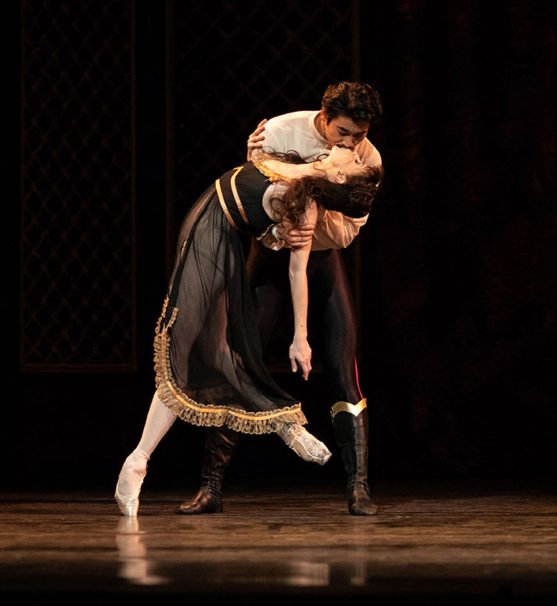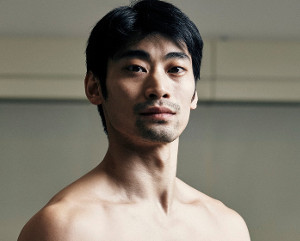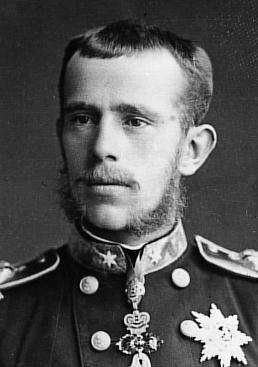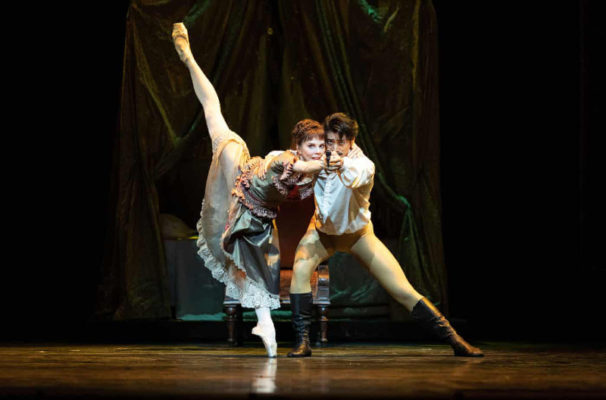
Last night, at 8:20 pm, most of Los Angeles experienced a 7.1-magnitude earthquake. But those viewing Kenneth McMillan‘s sprawling historic dance-drama, Mayerling, performed by the Royal Ballet at the Dorothy Chandler Pavilion of the Los Angeles Music Center, had to settle for a tornado.
For on opening night of the Royal’s rare visit to Los Angeles, we witnessed the great-and-greater ballerina Natalia Osipova rip into the role of Mary Vetsera in MacMillan’s hugely impactful three-act ballet set to a score of Liszt compositions.
The ballet shows its age, rather its era. Choreographed in 1978 by the man who with Sir Frederick Ashton is most associated with British ballet, Mayerling belongs to a transitional time as the formal classical ballet incorporated elements of modern dance.
MacMillan introduced much invention into this ambitious work based on nothing less profound than the onset of World War I. Successfully showcasing a generation of marvelous British ballerinas, MacMillan choreographed for a passel of them in his ballet. In their choreography, he imbued a predominantly geometric art form with curvilinear shapes. Many, many beautiful ones; he had a splendid eye.

It was a joy to behold the Royal’s ladies, steely on their pointes, pristine and soundless in their footwork. And their long and shapely arms that breathe organically from supple spines. A highlight is Sarah Lamb, as Rudolf’s former lover, Countess Larisch — a total dancer, a thrilling dancer. Others of Rudolf’s female contingent — a thicket of female roles difficult to track — included Francesca Hayward and Marianela Nunez. MacMillan introduced one out-of-the-box sequence for a cluster of chamber maids. He spun another, with British patience and decorum: a divertissement for a chain of men and one ballerina who transferred between the guys in witty ways. It hearkened the Rose Adagio from a ballet so associated with the Royal, “Sleeping Beauty.”
MacMillan’s subject is the murder-suicide of the heir to the Austro-Hungarian empire, Crown Prince Rudolf, and his teenage paramour Mary Vetsera — a seminal event at a hunting lodge called Mayerling that brought about the dissolution of an empire which in turn pointed Europe toward World War I.

Embodying this tortured young man — a lad pulled on one side by his democratic-leaning pals and on the other by psychological despair and substance abuse, was the Royal’s principal dancer, the tall, handsome Ryoichi Hirano. I saw Hirano, fiery, two months ago in London as Tybalt in Romeo and Juliet. But his very first steps on the Chandler stage took too literally Rudolf’s wobbly nature. He wasn’t fully (as dancers put it) “on his legs”; neither were his legs well stretched; the same went for his flattish feet. He sorely needed that technique to plant MacMillan’s sparse choreography. When I say “sparse,” I use it in the sense that today’s dancers complete five steps to every one undertaken by dancers in 1978. Mayerling is a period piece in that regard, and several in the audience found it boring. (I very much didn’t. I loved its grandeur and formalism.) The ballet in fact is blessed with full-force displays of thick organic choreography, but there are long stretches in between. Stillness is hard for dancers!

Neither was Hirano’s acting really satisfactory; his visage was a blank, and his body did not register angst. Which raises a most sensitive question: Why cast a Japanese dancer as a prince of the Austro-Hungarian empire? Then the cultural epicenter of Europe, Vienna was (how can I break this gently) a white man’s kingdom. I personally could not process the politically correct casting and found the culture clash distracting.
Along came Natasha. Having recently seen her Juliet invigorate David Hallberg’s bloodless “Romeo” in MacMillan’s “other” Royal Ballet chestnut, I rested easy in the knowledge that no weakness of the ballet — its datedness, Hirano’s shortfalls, the Chandler’s murky stage — in short, any obstacles, would not be immediately dispelled by the arrival of Tornado Natasha.

And that she did. Osipova threw down an avalanche of acrobatics in her Act III pas de deux: tricky, perilous lifts and swooping “fish” dives attacked with mad abandon. And Hirano stepped up as a partner; but consider the opposite. Had he failed to catch Osipova as she spun ’round his head and shoulders like a comet, it wouldn’t end well. No matter how you feel about Osipova’s near-circus-lady performance, in Mayerling, she entered a relatively stolid stage and turned the proceedings on their head, taking command like a dominatrix. The takeaway was that a tale of a delicate political tipping point was converted by an encounter with a tornado dancer.
The Royal, of course, sent out alternate casts in performances over the weekend. Next Friday and Saturday brings the Royal’s technology-infused evening of contemporary ballet by Wayne McGregor. Kudos to the Music Center’s Rachel Moore for this season-capping programming jewel. Prestigious!
arts·meme founder/dance critic Debra Levine authored this review.
Ades & McGregor | The Royal Ballet | The Music Center’s Dorothy Chandler Pavilion | July 12-13
